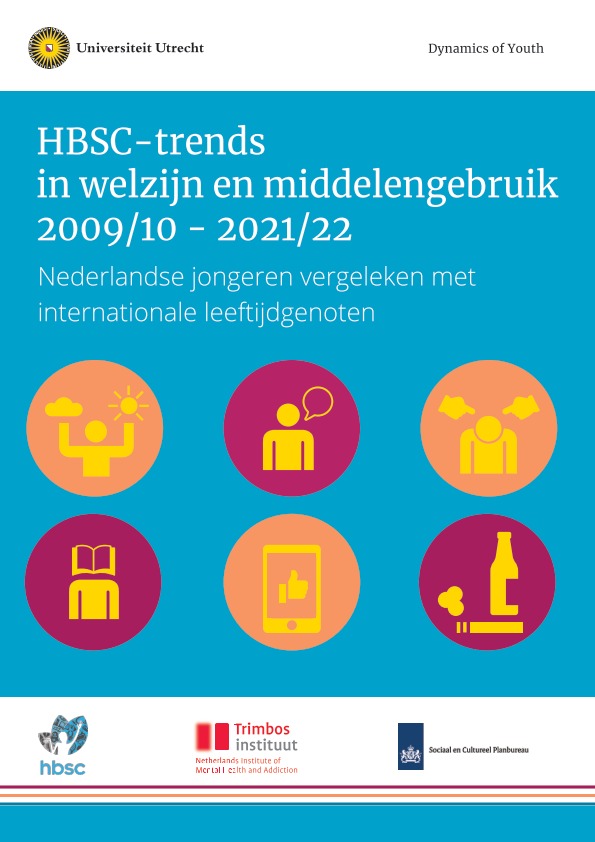A new fact sheet from the Health Behaviour in School-aged Children (HBSC) team in the Netherlands presents a nuanced picture of youth well-being. The findings, published by Utrecht University, reveal both encouraging trends and areas of growing concern. The results highlight critical shifts in mental health, substance use, school experiences, and social media habits among Dutch youth, offering crucial insights to guide support for young people throughout the Netherlands and beyond.
Social relationships: a standout strength
One of the most positive findings presented in the fact sheet is the strong social connections enjoyed by Dutch youth. Compared to their international peers, Dutch adolescents report particularly high levels of ease in communicating with their parents about concerns. They also experience substantial support from family, friends, teachers, and classmates. This social embeddedness appears to be a key strength of Dutch youth, with the Netherlands consistently ranking among the top 5 countries in these measures.
The report also highlights that bullying remains relatively uncommon in the Netherlands. Dutch youth report lower rates of both bullying victimisation and perpetration compared to the international average. Additionally, loneliness is less prevalent among Dutch adolescents, with the Netherlands being one of the five countries with the lowest percentage of young people feeling lonely.
Mental health: a mixed picture
While Dutch youth still fare relatively well in terms of mental health compared to their international counterparts, there are signs of deterioration, particularly among girls. The percentage of Dutch youth rating their life satisfaction as 6 or higher on a 10-point scale has decreased more sharply than the international average between 2017/18 and 2021/22.
Psychosomatic complaints, such as headaches, stomachaches, sleep problems, and feeling unhappy, have also increased more steeply in the Netherlands than in other countries. Although three-quarters of countries score less favorably than the Netherlands in terms of psychosomatic complaints, the proportion of Dutch girls reporting more than one such complaint per week is notably high at 50%.
School experience and pressure
A concerning trend is the increasing pressure from schoolwork reported by Dutch youth, especially girls. This aligns with international trends between 2017/18 and 2021/22. However, what stands out is that this unfavorable trend in the Netherlands began as early as 2009/10, which is not observed internationally. While Dutch youth were top performers in 2009/10 (with no country where boys experienced as little pressure from schoolwork as in the Netherlands), since 2017/18, the Netherlands has become a middle-of-the-pack performer in this area.
The report also reveals a steady decline in school enjoyment among Dutch adolescents since 2009/10, especially among girls. While Dutch adolescents previously reported enjoying school more than their international peers, their scores in 2021/22 have fallen to the international average.
Substance use
The report indicates that substance use among Dutch youth remains a concern. Approximately 10% of young people aged 11, 13, and 15 have ever smoked, and about 20% have consumed alcohol in the past month. These figures are close to the international average. However, cannabis use among 15-year-olds in the Netherlands is considerably higher than the international average, with 17% of boys and 15% of girls reporting having ever used cannabis, compared to 13% and 11% internationally.
Social media use: a positive outlier
An area where Dutch youth stand out positively is in their use of social media. The Netherlands has the lowest percentage of young people with problematic social media use among all participating countries. This suggests that Dutch adolescents may have developed healthier relationships with digital technologies compared to their international peers.
However, there has been a slight increase in intensive social media use (all-day contact with others via social media) since 2017/18, while international rates remained stable. Problematic social media use has also increased among Dutch adolescents between 2017/18 and 2021/22, particularly among girls, though rates remain well below the international average.
Gender disparities
A noteworthy and concerning trend observed both internationally and in the Netherlands is the deterioration in various health and well-being indicators among girls between 2017/18 and 2021/22. This widening gender gap calls for attention from professionals, policymakers, and researchers.
A call to action
Professor Gonneke Stevens, lead researcher of the HBSC study in the Netherlands, comments: “These findings paint a complex picture of youth well-being in the Netherlands. While we see many positives, particularly in social relationships and social media use, the growing mental health concerns and increased school pressure, especially among girls, are worrying trends that demand our attention.
Read the fact sheet (Dutch)
